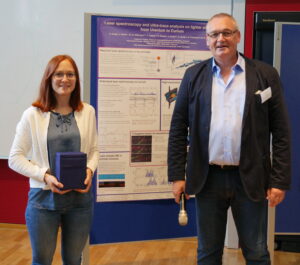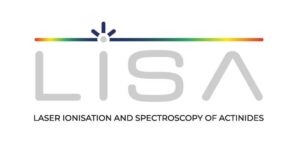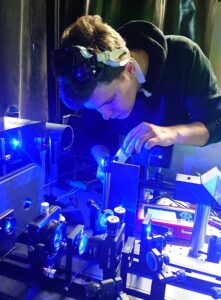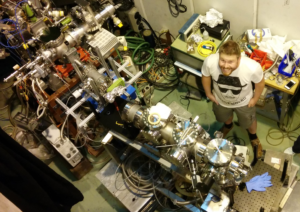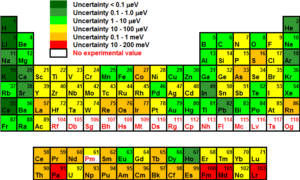For the exact determination of the half-life of molybdenum-93, which is approximately 4000 years, the branching ratio of radioactive decay needs to be measured. This can be done by measuring the ratio of the daughter nuclei niobium-93 and niobium-93m. Since these are isomers with nearly the same mass, this ratio cannot be measured by means of mass spectrometry alone.
With the help of selective laser excitation, however, differences in the hyperfine structure of the two nuclei, caused by different magnetic moments, can be exploited to achieve a separation by laser ionization.
The aim of this work is to characterize suitable atomic transitions for such a separation and to quantify the sensitivity and spectral resolution on stable niobium-93, followed by a measurement of the isotope ratio Nb-93/Nb-93m by laser spectroscopy. For the first time the magnetic moment of Nb-93m (as well as other radioactive Nb nuclides) can be determined by measuring the hyperfine structure.
Partial aspects of this project can be assigned as bachelor thesis.




